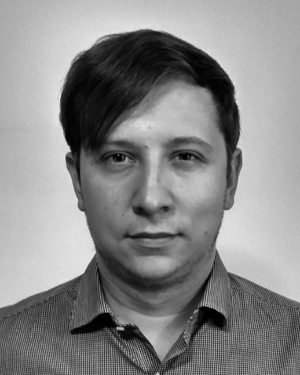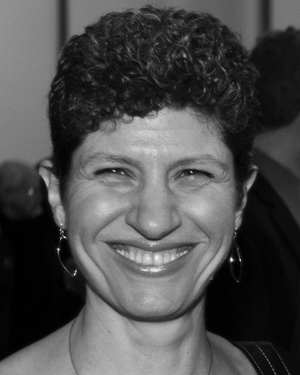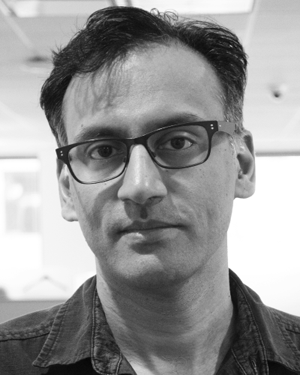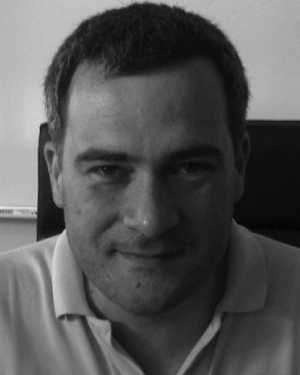Abstract:
The availability of very wide spectrum in millimeter wave bands combined with large antenna arrays and ultra-dense networks raises two basic questions: What is the true v...Show MoreMetadata
Abstract:
The availability of very wide spectrum in millimeter wave bands combined with large antenna arrays and ultra-dense networks raises two basic questions: What is the true value of overly abundant degrees of freedom and how can networks be designed to fully exploit them? This paper determines the capacity scaling of large cellular networks as a function of bandwidth, area, number of antennas, and base station density. It is found that the network capacity has a fundamental bandwidth scaling limit, beyond which the network becomes power-limited. An infrastructure multi-hop protocol achieves the optimal network capacity scaling for all network parameters. In contrast, current protocols that use only single-hop direct transmissions cannot achieve the capacity scaling in wideband regimes except in the special case when the density of base stations is taken to impractical extremes. This finding suggests that multi-hop communication will be important to fully realize the potential of next-generation cellular networks. Dedicated relays, if sufficiently dense, can also perform this task, relieving user nodes from the battery drain of cooperation. On the other hand, more sophisticated strategies such as hierarchical cooperation, that are essential for achieving capacity scaling in ad hoc networks, are unnecessary in the cellular context.
Published in: IEEE Transactions on Wireless Communications ( Volume: 17, Issue: 1, January 2018)
Funding Agency:

Dipartimento di Ingegneria dell’Informazione, University of Padova, Padua, Italy
Department of Electrical Engineering, Stanford University, Stanford, CA, USA
AtlantTIC, University of Vigo, EE Telecomunicación, Vigo, Spain
Felipe Gómez-Cuba received the Ingeniero de Telecomunicación degree (Telecommunication Engineering five year program) in 2010, the M.Sc. degree in signal processing applications for communications in 2012, and the Ph.D. degree from the University of Vigo, Spain, in 2015. He was a Researcher with the Information Technologies Group, Telematic Engineering Department, University of Vigo, from 2010 to 2011, and the Galician Re...Show More
Felipe Gómez-Cuba received the Ingeniero de Telecomunicación degree (Telecommunication Engineering five year program) in 2010, the M.Sc. degree in signal processing applications for communications in 2012, and the Ph.D. degree from the University of Vigo, Spain, in 2015. He was a Researcher with the Information Technologies Group, Telematic Engineering Department, University of Vigo, from 2010 to 2011, and the Galician Re...View more

Department of Electrical and Computer Engineering, New York University Tandon School of Engineering, Brooklyn, NY, USA
Elza Erkip (S’93–M’96–SM’05–F’11) received the B.S. degree in Electrical and Electronics Engineering from Middle East Technical University, Ankara, Turkey, and the M.S. and Ph.D. degrees in Electrical Engineering from Stanford University, Stanford, CA, USA. She is currently a Professor of Electrical and Computer engineering with the New York University Tandon School of Engineering, Brooklyn, NY, USA. Her research interest...Show More
Elza Erkip (S’93–M’96–SM’05–F’11) received the B.S. degree in Electrical and Electronics Engineering from Middle East Technical University, Ankara, Turkey, and the M.S. and Ph.D. degrees in Electrical Engineering from Stanford University, Stanford, CA, USA. She is currently a Professor of Electrical and Computer engineering with the New York University Tandon School of Engineering, Brooklyn, NY, USA. Her research interest...View more

Department of Electrical and Computer Engineering, New York University Tandon School of Engineering, Brooklyn, NY, USA
Sundeep Rangan (S’94–M’98–SM’13–F’16) received the B.A.Sc. degree from the University of Waterloo, Canada, and the M.Sc. and Ph.D. degrees from the University of California at Berkeley, Berkeley, CA, USA, all in electrical engineering. He has held post-doctoral appointments with the University of Michigan, Ann Arbor, MI, USA, and Bell Labs.
In 2000, he co-founded (with four others) Flarion Technologies, a spin-off of Bell ...Show More
Sundeep Rangan (S’94–M’98–SM’13–F’16) received the B.A.Sc. degree from the University of Waterloo, Canada, and the M.Sc. and Ph.D. degrees from the University of California at Berkeley, Berkeley, CA, USA, all in electrical engineering. He has held post-doctoral appointments with the University of Michigan, Ann Arbor, MI, USA, and Bell Labs.
In 2000, he co-founded (with four others) Flarion Technologies, a spin-off of Bell ...View more

AtlantTIC, University of Vigo, EE Telecomunicación, Vigo, Spain
Francisco Javier González-Castaño received the Ingeniero de Telecomunicación degree from the University of Santiago de Compostela, Spain, in 1990, and the Ph.D. degree in telecomunicación from the University of Vigo, Spain, in 1998. He is currently a Catedrático de Universidad (Full Professor) with the Telematics Engineering Department, University of Vigo, Spain, where he leads the Information Technologies Group. He has a...Show More
Francisco Javier González-Castaño received the Ingeniero de Telecomunicación degree from the University of Santiago de Compostela, Spain, in 1990, and the Ph.D. degree in telecomunicación from the University of Vigo, Spain, in 1998. He is currently a Catedrático de Universidad (Full Professor) with the Telematics Engineering Department, University of Vigo, Spain, where he leads the Information Technologies Group. He has a...View more

Dipartimento di Ingegneria dell’Informazione, University of Padova, Padua, Italy
Department of Electrical Engineering, Stanford University, Stanford, CA, USA
AtlantTIC, University of Vigo, EE Telecomunicación, Vigo, Spain
Felipe Gómez-Cuba received the Ingeniero de Telecomunicación degree (Telecommunication Engineering five year program) in 2010, the M.Sc. degree in signal processing applications for communications in 2012, and the Ph.D. degree from the University of Vigo, Spain, in 2015. He was a Researcher with the Information Technologies Group, Telematic Engineering Department, University of Vigo, from 2010 to 2011, and the Galician Research and Development Center in Advanced Telecommunications, Vigo, Spain, from 2011 to 2013. He was a Visiting Scholar with the NYUWireless Center, NYU Tandon School of Engineering, Brooklyn, NY, USA, from 2013 to 2014 and received the Ph.D. degree under the FPU Grant from the Spanish MINECO from 2013 to 2016 with the University of Vigo. He received the Marie Curie Individual Fellowship, Global Fellowship with the Dipartimento d’Engegneria dell’Informazione, University of Padova, Italy, and the Department of Electrical Engineering, Stanford University, USA, in 2016.
Felipe Gómez-Cuba received the Ingeniero de Telecomunicación degree (Telecommunication Engineering five year program) in 2010, the M.Sc. degree in signal processing applications for communications in 2012, and the Ph.D. degree from the University of Vigo, Spain, in 2015. He was a Researcher with the Information Technologies Group, Telematic Engineering Department, University of Vigo, from 2010 to 2011, and the Galician Research and Development Center in Advanced Telecommunications, Vigo, Spain, from 2011 to 2013. He was a Visiting Scholar with the NYUWireless Center, NYU Tandon School of Engineering, Brooklyn, NY, USA, from 2013 to 2014 and received the Ph.D. degree under the FPU Grant from the Spanish MINECO from 2013 to 2016 with the University of Vigo. He received the Marie Curie Individual Fellowship, Global Fellowship with the Dipartimento d’Engegneria dell’Informazione, University of Padova, Italy, and the Department of Electrical Engineering, Stanford University, USA, in 2016.View more

Department of Electrical and Computer Engineering, New York University Tandon School of Engineering, Brooklyn, NY, USA
Elza Erkip (S’93–M’96–SM’05–F’11) received the B.S. degree in Electrical and Electronics Engineering from Middle East Technical University, Ankara, Turkey, and the M.S. and Ph.D. degrees in Electrical Engineering from Stanford University, Stanford, CA, USA. She is currently a Professor of Electrical and Computer engineering with the New York University Tandon School of Engineering, Brooklyn, NY, USA. Her research interests are in information theory, communication theory, and wireless communications.
She is a member of the Science Academy Society of Turkey and is among the 2014 and 2015 Thomson Reuters Highly Cited Researchers. She has been a member of the Board of Governors of the IEEE Information Theory Society since 2012, where she is currently the First Vice President. She was a Distinguished Lecturer of the IEEE Information Theory Society from 2013 to 2014. She received the NSF CAREER Award in 2001 and the IEEE Communications Society WICE Outstanding Achievement Award in 2016. Her paper awards include the IEEE Communications Society Stephen O. Rice Paper Prize in 2004 and the IEEE Communications Society Award for Advances in communication in 2013.
Dr. Erkip has had many editorial and conference organization responsibilities. Some recent ones include the Asilomar Conference on Signals, Systems and Computers, MIMO Communications and Signal Processing Track Chair in 2017, the IEEE Wireless Communications and Networking Conference Technical Co-Chair in 2017, the IEEE Journal on Selected Areas in Communications Guest Editor in 2015, and the IEEE International Symposium of Information Theory General Co-Chair in 2013.
Elza Erkip (S’93–M’96–SM’05–F’11) received the B.S. degree in Electrical and Electronics Engineering from Middle East Technical University, Ankara, Turkey, and the M.S. and Ph.D. degrees in Electrical Engineering from Stanford University, Stanford, CA, USA. She is currently a Professor of Electrical and Computer engineering with the New York University Tandon School of Engineering, Brooklyn, NY, USA. Her research interests are in information theory, communication theory, and wireless communications.
She is a member of the Science Academy Society of Turkey and is among the 2014 and 2015 Thomson Reuters Highly Cited Researchers. She has been a member of the Board of Governors of the IEEE Information Theory Society since 2012, where she is currently the First Vice President. She was a Distinguished Lecturer of the IEEE Information Theory Society from 2013 to 2014. She received the NSF CAREER Award in 2001 and the IEEE Communications Society WICE Outstanding Achievement Award in 2016. Her paper awards include the IEEE Communications Society Stephen O. Rice Paper Prize in 2004 and the IEEE Communications Society Award for Advances in communication in 2013.
Dr. Erkip has had many editorial and conference organization responsibilities. Some recent ones include the Asilomar Conference on Signals, Systems and Computers, MIMO Communications and Signal Processing Track Chair in 2017, the IEEE Wireless Communications and Networking Conference Technical Co-Chair in 2017, the IEEE Journal on Selected Areas in Communications Guest Editor in 2015, and the IEEE International Symposium of Information Theory General Co-Chair in 2013.View more

Department of Electrical and Computer Engineering, New York University Tandon School of Engineering, Brooklyn, NY, USA
Sundeep Rangan (S’94–M’98–SM’13–F’16) received the B.A.Sc. degree from the University of Waterloo, Canada, and the M.Sc. and Ph.D. degrees from the University of California at Berkeley, Berkeley, CA, USA, all in electrical engineering. He has held post-doctoral appointments with the University of Michigan, Ann Arbor, MI, USA, and Bell Labs.
In 2000, he co-founded (with four others) Flarion Technologies, a spin-off of Bell Labs, that developed Flash OFDM, one of the first cellular OFDM data systems and pre-cursor to 4G systems, including LTE and WiMAX. In 2006, Flarion was acquired by Qualcomm Technologies, where he was the Director of Engineering involved in OFDM infrastructure products. He joined the ECE Department, NYU Tandon, Brooklyn, NY, USA, in 2010. He is the Director of NYU WIRELESS, an academic-industry research center researching next-generation wireless systems. His research interests are in wireless communications, signal processing, information theory and control theory.
Sundeep Rangan (S’94–M’98–SM’13–F’16) received the B.A.Sc. degree from the University of Waterloo, Canada, and the M.Sc. and Ph.D. degrees from the University of California at Berkeley, Berkeley, CA, USA, all in electrical engineering. He has held post-doctoral appointments with the University of Michigan, Ann Arbor, MI, USA, and Bell Labs.
In 2000, he co-founded (with four others) Flarion Technologies, a spin-off of Bell Labs, that developed Flash OFDM, one of the first cellular OFDM data systems and pre-cursor to 4G systems, including LTE and WiMAX. In 2006, Flarion was acquired by Qualcomm Technologies, where he was the Director of Engineering involved in OFDM infrastructure products. He joined the ECE Department, NYU Tandon, Brooklyn, NY, USA, in 2010. He is the Director of NYU WIRELESS, an academic-industry research center researching next-generation wireless systems. His research interests are in wireless communications, signal processing, information theory and control theory.View more

AtlantTIC, University of Vigo, EE Telecomunicación, Vigo, Spain
Francisco Javier González-Castaño received the Ingeniero de Telecomunicación degree from the University of Santiago de Compostela, Spain, in 1990, and the Ph.D. degree in telecomunicación from the University of Vigo, Spain, in 1998. He is currently a Catedrático de Universidad (Full Professor) with the Telematics Engineering Department, University of Vigo, Spain, where he leads the Information Technologies Group. He has authored over 80 papers in international journals, in the fields of telecommunications and computer science, and has participated in several relevant national and international projects. He holds two U.S. patents.
Francisco Javier González-Castaño received the Ingeniero de Telecomunicación degree from the University of Santiago de Compostela, Spain, in 1990, and the Ph.D. degree in telecomunicación from the University of Vigo, Spain, in 1998. He is currently a Catedrático de Universidad (Full Professor) with the Telematics Engineering Department, University of Vigo, Spain, where he leads the Information Technologies Group. He has authored over 80 papers in international journals, in the fields of telecommunications and computer science, and has participated in several relevant national and international projects. He holds two U.S. patents.View more


